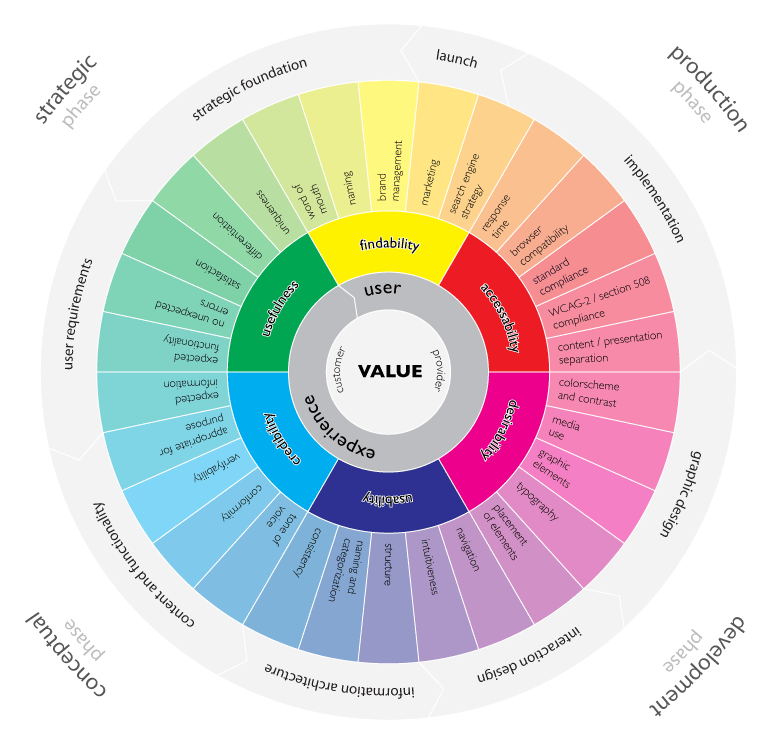Nine essential things to consider when planning a website

Your website could be the best tool for promoting and growing your business. However planning a site can be a daunting task. Here’s a checklist to work through when planning your site.
Plan you website the right way. Think first about the goals and direction of your business. By giving your web developer the ‘big picture’ he/she can best create a website that helps to meet your business targets.
What are the goals of this website? Do you want to:
Build brand awareness?
Generate new leads?
Increase brand awareness?
Improve communication with customers?
Create an informative blog?
Increase sales?
Provide access to a social discussion community?
Users, users users! Think about why users will come to your site, and what they will want once they’re there. Try to avoid the website coming across as a CV; it should be about benefits to users. Plan the site from the users’ perspective(s), rather than your organisational structure. Consider the type of design that will work best for your users; corporate, informal, quirky?
A clear and usable design can be achieved through:
Simplicity – Focus on what’s important. If you don’t distract your vistors they will be more likely to do what you want them to do.
Familiarity – Stick to what people already know. There is nothing wrong with looking at other sites for inspiration.
Consistency – Don’t get cute. Create a consistent experience across your entire website to keep your visitors mind at ease.
Guidance – Take your visitors by the hand. Don’t expect your visitors to explore your site all on their own. Instead, guide them through your site and show them what you have to offer.
Direct feedback – Feedback is essential to any interaction. The moment people interact with your site, make sure to offer an indication of success or failure of their actions.
Good information architecture – Understand your visitors’ mental models and how they would expect you to structure the content on your site.

Above: UX wheel by Magnus Revang, User Experience Architect. The Model starts in the middle.
Will you need to update your content? For most sites this is a necessity, and to keep costs down it’s best if you can do this yourself, without going back to your developer/designer. To do this you will need a Content Management System (CMS). Talk to your developer about which CMS they use, and see if it’s easy to use. TIP – ask for a test drive!
To maximise your operation’s potential, you need a reliable content management system (CMS). You’ll find plenty of them out there, and they all allow you to create and manage your own content, website and blogs. But some are more effective than others. So in this article, we’ll highlight the best systems, which cater for different needs and budgets.
Read more on TechRadar – ‘Best CMS of 2021‘
Keep it simple. Try to convey your key messages quickly and clearly. Tell visitors: Who you are / What you offer / Why it’s good /What to do next.
Get to the point, quickly. Studies show that most users simply don’t read long passages of text. Good web copywriting is key to converting visitors into customers. How you write can also affect your search engine rankings (SEO).
TIP: For lengthier content you can include a blog, newsletters / updates, interviews, guides, white papers, etc. See these 99 ideas for website content.
How do you write content for a website?
Step 1: Determine the Purpose of the Website
Step 2: Research the Audience
Step 3: Research Competing Websites
Step 4: Plan How the Content Fits Together on Your Website
Step 5: Write the Content for Each Page
Step 6: Add Non-Copy Page Elements
Step 7: Make Edits
Step 8: Optimize the Page for SEO
Step 9: Plan to Update Content LaterRead more on Alexa.com – ‘How to write content for a website in 9 steps‘
Does your website need to scale? Will your requirements and features develop over time? If you think there’s a chance you’ll want to add features later, make sure you tell your web developer at the start – it could affect the decisions s/he makes now.
Keep your design simple, flexible and modular to make it easy to change your content and adapt to other contexts.
As you make technology choices, think about whether they will make it easier or harder to scale.
Ok great site! … but how will you tell people about it? Consider email campaigns, e-marketing, social media, press releases and don’t forget good old word-of-mouth too.
Whether you are launching a brand new site or relaunching an old one, you want to launch it with a bang and let the whole world know. I have Outlined 11 Tactics to announce the launch of your new website and get tons of targeted visitors.
Read more on attentionalways.com – ‘11 Tactics to Successfully Launch (& Announce) Your New Site‘
How much do you want to spend? Everyone needs value-for-money and there’s a balance to be found between something that just ‘does the job’ and a site which you can easily update and that can grow with you. Also, consider the level of support and service you may need in the months and years ahead.
If you’re hoping for a prize-winning website that’s dynamic and eye-catching; you’re unlikely to recreate similar effects using free website templates, but – web design costs do vary tremendously!
Read more on designbox.co.uk – ‘How Much Does A Website Cost (UK)‘
Think about an appropriate domain name. Avoid hyphens, strange spellings and overly-long names.
Why is your domain name so important? It’s your “first impression”. Your URL is the first thing your visitors will see. A good domain name can make a positive and lasting impression, while a bad domain name can send visitors running. It affects SEO. While exact match domains (EMDs) are no longer a necessity, keywords in your domain name can still help your SEO ranking. It defines your brand – the right domain name can increase brand recognition.
Read more on WebsiteSetup.org – ‘How to Choose a Domain Name 10 Recommendations & Tips (#3 and #8 Are Most Important)‘
The best websites are continually improved – starting with great content, regularly updated, and including search engine optimisation.
Okay, yes, you do need to make certain website updates, like updating team headshots or adding verbiage to a page. But those are necessary website updates that need to happen regardless of your website strategy; they’re just part of having a website. However, there’s more to updating your site and to improve it. In order to maximize your website’s performance, you’ll want to consider using the data it provides – not just on day one of the launch, but every day following. Without factoring this in, your website is just like an online brochure; you’ll be throwing your darts at the wall hoping something will stick.
Read more on vye.agency – ‘What’s the Deal with Continuous Website Improvement?‘
Hopefully this guide has given you some food for thought if you’re planning a new website. We all know people who have made mistakes which turn out to be costly in the long run (when the site has to be rebuilt!). Time spent now thinking about what you and your users really want from your site, could avoid potential problems later on. Good luck!
Originally written by Dan, Creative Director at Siteroom and Consilience Media. Updated for 2021 with quotes and links.




Leave a Reply